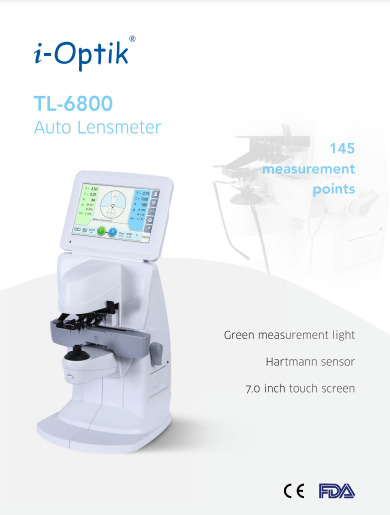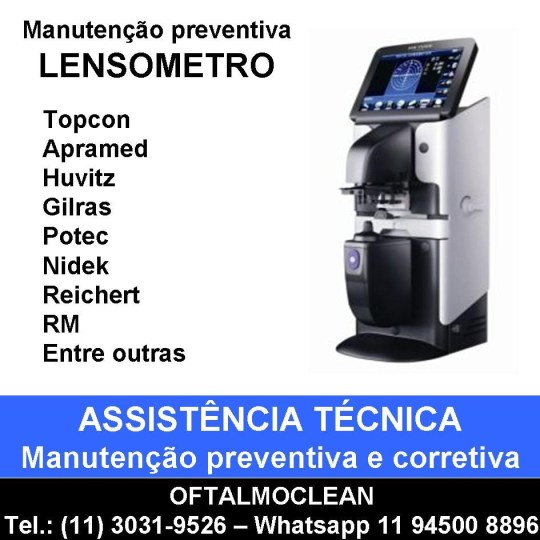#lensmeters
Text
Master Vision Accuracy with Top Auto Lensmeter Picks
Discover top auto lensmeters for accurate eye measurements. Simple, effective tools for anyone looking to ensure the best in vision care and lens accuracy.
1 note
·
View note
Text
Lensmeter
As we celebrate the first anniversary of our journey together, it's fitting to delve into a fundamental tool that plays a pivotal role in the realm of optometry – the lensmeter. Often overshadowed by the glamour of stylish frames and cutting-edge lens technology, the lensmeter quietly stands as a stalwart guardian of visual precision, ensuring that every pair of eyeglasses meets the exacting standards of accuracy.
At its core, a lensmeter is a sophisticated optical instrument designed to measure the power and prescription of lenses. When you step into an optometrist's office, the lensmeter is the unsung hero that ensures your corrective lenses are tailored to address your unique vision needs. It achieves this by assessing the power, axis, and prism in eyeglass lenses, providing optometrists with the essential data to craft lenses that bring the world into clear focus for their patients.
One of the lensmeter's key functionalities is the measurement of lens power, expressed in diopters. This measurement is critical in determining the level of refractive error in an individual's eyes, whether it be nearsightedness, farsightedness, or astigmatism. By precisely gauging the power of each lens, the lensmeter empowers optometrists to fine-tune prescriptions, ensuring that wearers experience optimal visual acuity.
Furthermore, the lensmeter plays a crucial role in identifying the axis and prism power in lenses. Axis measurement is essential for correcting astigmatism, a common condition where the cornea or lens has an irregular shape. The lensmeter helps determine the orientation of the cylindrical correction needed for astigmatic eyes, ensuring that light entering the eye is properly focused.
In the case of prism power, the lensmeter aids in addressing visual alignment issues, such as strabismus or binocular vision disorders. By precisely measuring the prism required, optometrists can create lenses that help align the eyes, promoting comfortable and coordinated binocular vision.
The lensmeter's significance extends beyond the realm of optometry clinics. Opticians and eyewear professionals rely on this instrument to verify the accuracy of lenses before they reach the end wearer. This meticulous verification process ensures that the lenses conform to the prescribed specifications, guaranteeing a seamless transition from the examination room to the real world.
In the ever-evolving landscape of eyecare technology, the lensmeter stands as a beacon of reliability. While innovations like digital lenses and smart eyewear capture headlines, the lensmeter remains an indispensable tool that upholds the precision standards of the optical industry. Its role in ensuring the accuracy of prescriptions is timeless, a testament to its enduring importance in the dynamic field of vision care.
As we mark the first year of our journey together, let's take a moment to appreciate the lensmeter's silent contribution to the clarity and precision of our vision. In its unassuming presence, this optical instrument continues to be an unsung hero, shaping the way we perceive the world, one precisely measured lens at a time.
Read More- https://devinemeditech.com/lens-meter.php
0 notes
Text
Auto Lensometer, Auto lensmeter, Portable Lensometer

Auto Lensometer, Auto lensmeter, Portable Lensometer, I Optik TL 6800 offer accurate and reliable objective measurement results.
For More Details,
Visit:-https://labmedicasystems.com/auto-lensmeter.html
Contact Us:-+91 7926574383
0 notes
Note
This one's been bugging me for a while:In the live-action continuity, why in all the galaxy would the Decepticons have a bunch of mini-cons (Scalpel and a few others like him) that turn into lensmeters/lensometers?Cybertronian optics work significantly differently than human eyes, so there wouldn't be need for any actual lens-metering, and lensmeters are such specific and niche pieces of equipment that lensmeter altmodes aren't useful for infiltration. So what's the deal with all the lensmeters?
Dear Optically Outraged,
With the loss of his symbiote, Frenzy, Barricade had spent much of the battle for Mission City in a depressive state. When a stray attack sent him crashing into an opticians, he quickly became surrounded by newly-mutated Lens Masters. Barricade promptly abducted them all, retreating from the battle and surviving. He gave the Lens Masters an education in Decepticon philosophy, and they soon became devoted supporters of the cause. As for why they kept their original alternate modes—life as a Transformer can be chaotic and onerous, so AllSpark mutations tend to be most comfortable in the form they started out as.
#ask vector prime#transformers#maccadam#live action film series#frenzy#barricade#mission city#lens masters#scalpel#allspark#Anonymous
29 notes
·
View notes
Text
0 notes
Text
Tomey TL-700 Best Automated Lensmeter
The Tomey TL-7000 is a diagnostic instrument used in ophthalmology for measuring and evaluating various aspects of the eye. Specifically, it is a non-contact tonometer, which means it is designed to measure the intraocular pressure (IOP) of the eye without physically touching it.
Intraocular pressure refers to the fluid pressure inside the eye, and it is an important measurement in diagnosing and managing conditions like glaucoma. The Tomey TL-7000 uses a technology called air puff tonometry to measure IOP. It delivers a controlled burst of air onto the cornea and measures the response to determine the pressure inside the eye.
The main advantages of the Tomey TL-7000 are its non-contact nature, which eliminates the need for anesthesia or numbing eye drops, and its speed and ease of use. It provides quick and reliable IOP measurements, making it a valuable tool for routine eye examinations and glaucoma screenings.
Why should you use Tomey TL-7000?
The Tomey TL-7000 is a useful tool in the fields of ophthalmology and optometry for a number of reasons:
Accurate and Reliable Measurements: The TL-7000 measures intraocular pressure (IOP) via non-contact tonometry. IOP readings using this technology are incredibly precise and dependable.
Non-Invasive: The TL-7000 does not need to come into contact with the eye because it is a non-invasive device. This enhances patient comfort while lowering the chance of infection.
Easy to Use: There is no additional training needed to operate the TL-7000. The device has an intuitive user interface and offers detailed operating instructions.
Built-in Printer: A built-in printer on the TL-7000 makes it simple to record test findings. For the purpose of exchanging information with other healthcare experts and keeping accurate records of patients' eye health, this is crucial.
Screen for Glaucoma: A disorder called glaucoma has the potential to harm the optic nerve and impair eyesight. Glaucoma screening is crucial for early diagnosis and treatment. The TL-7000 is a useful instrument for assessing intraocular pressure and glaucoma screening.

The Tomey TL-7000 is a useful tool for gauging intraocular pressure and doing glaucoma screenings. It features a built-in printer for recording test findings, and it is accurate, dependable, non-invasive, and simple to use.
0 notes
Text
0 notes
Text
AUTO LENSOMETER | AUTO LENSMETER | PORTABLE LENSOMETER

Auto lensometer or Auto lensmeter is a robust ophthalmic device used to measure the lens quickly and accurately. User friendly interface, fast measurement, easy operation, high accuracy, makes it an ideal and reliable device to choose from many available alternatives.
For More Details,
Visit:-https://www.labmedicasystems.com/i-optik-tl-6800.php?c=13
Contact us:-1800 309 2077
0 notes
Text
0 notes
Text
0 notes
Text
AUTO LENSOMETER | Labmedicasystem
Auto lensometer or Auto lensmeter is a robust ophthalmic device used to measure the lens quickly and accurately. User friendly interface, fast measurement, easy operation, high accuracy, makes it an ideal and reliable device to choose from many available alternatives.
Our portable lensometer is a durable, high functionality and low maintenance device and is highly known for offering precise and stable measurements. Manufactured using high-quality raw materials and latest technology, the device ensure efficiency at its best. We are Importer, Wholesaler & Supplier of I Optik TL 6800 Auto Lensometer, Auto lensmeter, Portable Lensometer in India.
For More Details:
Call us: 18003092077
0 notes
Text

LENSOMETRO
Manutenção preventiva de lensometro
Conserto (manutenção preventiva e corretiva), revisão e calibração para Lensometro de todas as marcas:
Topcon
Huvitz
Apramed
Nidek
Giltras
Potec
Zeiss
Luxvision
Toc
Entre outras
Emitimos o Certificado de manutenção e calibração.
Temos bobina térmica para impressora.
Situados em outras cidades podem enviar através do Sedex.
OFTALMOCLEAN
(11) 3031-9526
11 94500 8896
#lensometro, #calibracaolensometro, #consertolensometro, #manutencaolensometro, #reparolensometro, #huvitzbrasil, #gilrasbrasil, #potec, #olhos, #olho, #oftalmoclean, #consertolensometro, #oftalmologia, #gilrasbrasil, #potecassistenciatecnica, #apramed, #lensmeter, #olho, #olhos, #manutencaopreventivalensometro, #consertolensometrotopcon, #consertolensometrohuvitz, #consertolensometrotopcon, #calibracaolensometrotopcon, #assistenciahuvitz, #oftalmoclean, #instagam, #instagood, #eyes, #oftalmo, #visao, #cbo, #oticabrasil, #calibracaooftalmoglaucoma, #eyes, #oftalmo, #visao, #cbo, #reabilitacaovisual, #oticabrasil, #calibracaooftalmoglaucoma, #instagram, #instagood, #oftalmovet
0 notes
Text
Associated Optometry Equipment for Eye Care Professional
Associated optometry equipment refers to the various tools and instruments used by optometrists and other eye care professionals to examine and diagnose eye conditions, assess vision, and prescribe corrective measures. Here are some commonly used optometry equipment:
Autorefractors: Associated optometry equipment used to measure refractive errors in the eye, such as nearsightedness, farsightedness, and astigmatism.
Phoropters: Also known as refractors, these devices are used to determine an individual's exact eyeglass prescription by allowing the optometrist to change lenses and assess visual acuity.
Slit Lamp: A specialized microscope with a bright light source that allows for detailed examination of the front structures of the eye, including the cornea, conjunctiva, iris, and lens.
Ophthalmoscope: A handheld instrument that enables the optometrist to examine the interior structures of the eye, such as the retina, optic nerve, and blood vessels.
Tonometer: Used to measure intraocular pressure, which helps in diagnosing glaucoma. There are various types of tonometers, including applanation, non-contact (air puff), and handheld.
Keratometer: Measures the curvature of the cornea, which aids in fitting contact lenses and diagnosing corneal irregularities.
Visual Field Analyzer: Tests the complete field of vision, assessing peripheral and central vision to detect abnormalities and diagnose conditions like glaucoma and optic nerve damage.
Retinal Camera: Specialized digital cameras that capture high-resolution images of the retina, enabling the optometrist to document and monitor retinal health.
Pachymeter: Measures the thickness of the cornea, which is essential in the management of conditions like corneal edema and glaucoma.
Lensmeter: Determines the prescription of existing eyeglasses, including the power, axis, and prism values.
Optic Nerve Analyzer: Utilizes advanced imaging techniques to evaluate the optic nerve head and detect signs of glaucoma or other optic nerve disorders.
Visual Acuity Charts: Used to measure a patient's visual acuity at various distances, usually consisting of rows of letters or symbols of decreasing size.

These are just a few examples of the equipment commonly found in an optometry practice. Optometrists may also use other specialized devices depending on their specific areas of expertise and the needs of their patients. Associated optometry equipment can help you deliver better patient care while also enhancing the effectiveness and image of your practice.
0 notes